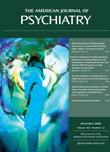The Sorrows of an American: A Novel
The Sorrows of an American is the fourth novel published by author Siri Hustvedt. It consists of several interwoven stories whose protagonists are two adult children of a Norwegian immigrant family and takes place during the year following their father’s death. At times the writing is sheer stream of consciousness, swiftly grafting details of each story on the others, so the novel’s central line becomes a bit difficult to follow. It is, however, apparent that this is a novel about the archetypal father, as father figures are central throughout the book. Indeed, the acknowledgments reveal that the book’s scaffolding leans on original excerpts from the journal written and left behind by the author’s father.
Erik Davidsen is a New York psychiatrist whose emotionally impoverished life after a divorce, focused almost exclusively on his work, suddenly becomes more animated with the appearance of his two tenants: Miranda, a graphic artist of Jamaican descent, and her little daughter Eggy. Eggy embraces Erik as her father figure and while he enjoys the role, the three of them become victims of a stalker. Unseen, Eggy’s biological father is watching them and leaving anonymous photos behind. At some point, he breaks into the house and captures an image of a very angry Erik raising a hammer at the perpetrator. The photo becomes part of an exhibit, which, as luck would have it, is attended by at least one of Erik’s patients. Interestingly, when confronted about his behavior, the stalker explains that Erik’s threatening demeanor in that moment reminded him of his own father’s relentless anger and ascribes this to “transference.” Erik is in a difficult situation, as he is sexually attracted to Miranda, who is ambivalent about her love object, although she recognizes who the more stable man is.
Inga, Erik’s sister, is a widow living with her 17-year-old daughter, Sonia, who has been traumatized not only by her father’s death from cancer, but also by watching the Twin Towers collapse on September 11 from a neighborhood window. The novel is set against the backdrop of the hurt city, with the horror returning in Sonia’s nightmares and in a moving poem she writes about her father’s decay and the day we will forever mourn. Inga is harassed by a journalist who appears to know a scandalous secret about her dead husband, a much celebrated author and playwright. Sonia is attuned to her mother’s pain but grieving herself, at the same time as Inga is bewildered by unraveling family secrets.
The central thread of the novel is a letter that Erik and Inga find in their departed father’s papers, which brings them back to Minnesota in order to uncover mysterious past events. The pursuit of the truth behind the letter and the reconstruction of their father’s life story based on his journal and people’s recollections about him are cathartic for both Inga and Erik. Getting closer to their father as they retrace his early steps amongst the Minnesota landscape is a healing experience. Sprinkled with depictions of psychotherapeutic exchanges and brief dissections of transference and countertransference processes, as well as with modern psychiatric terms, the book communicates the author’s sophisticated fund of knowledge and psychological insight. However, it is not clear who her target audience is; the neuropsychoanalytic name dropping may not ring a bell to lay readers, while those attracted by a story about the immigrant’s plights might look for a clearer description of life in the New World, as viewed by those transplanted around the middle of the past century. And finally, psychiatrists hoping to relax with a book placed outside of specialty journals or case conferences may be disappointed, as the novel keeps the readers on their toes with its intricate threads and throes.



